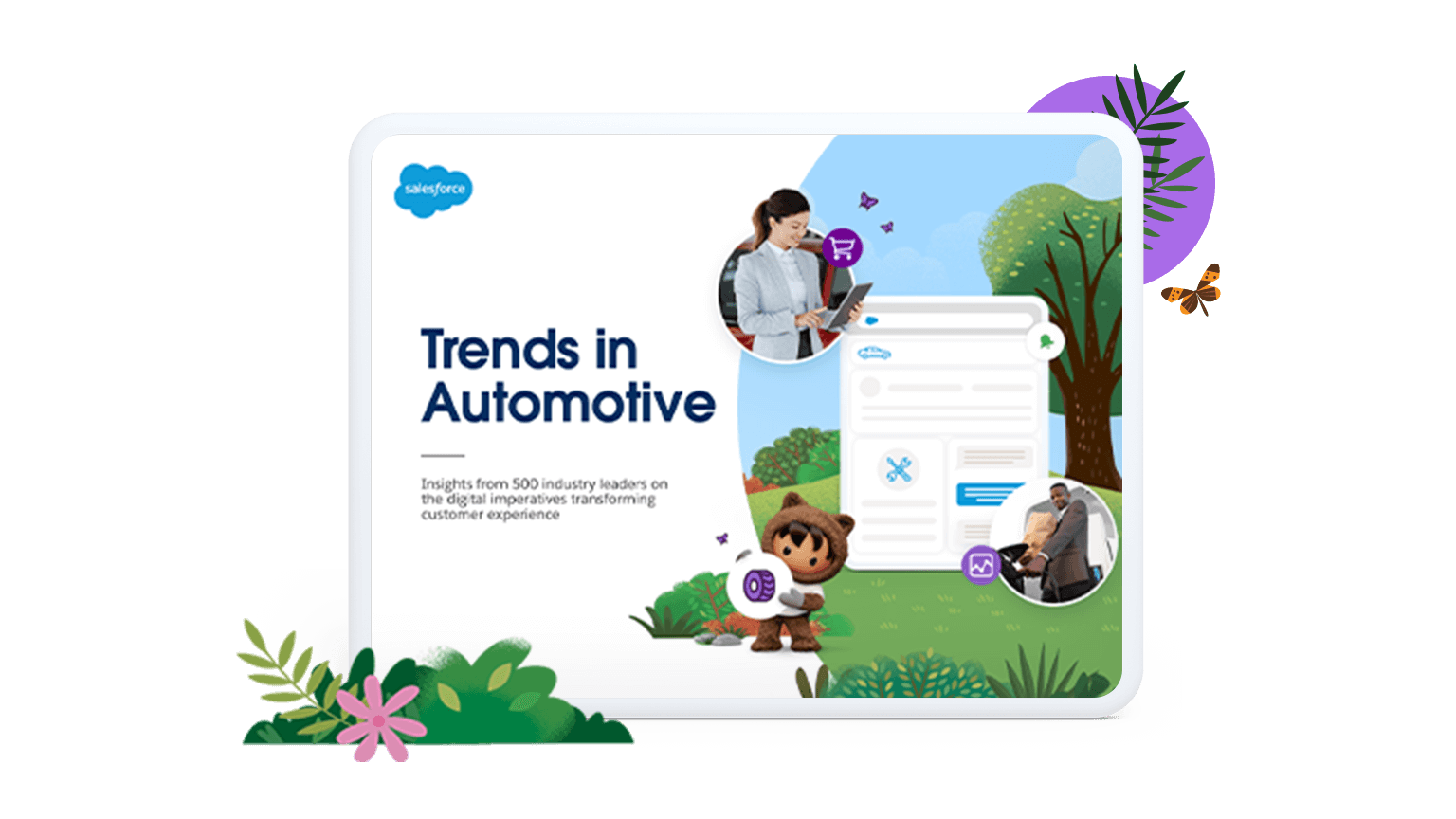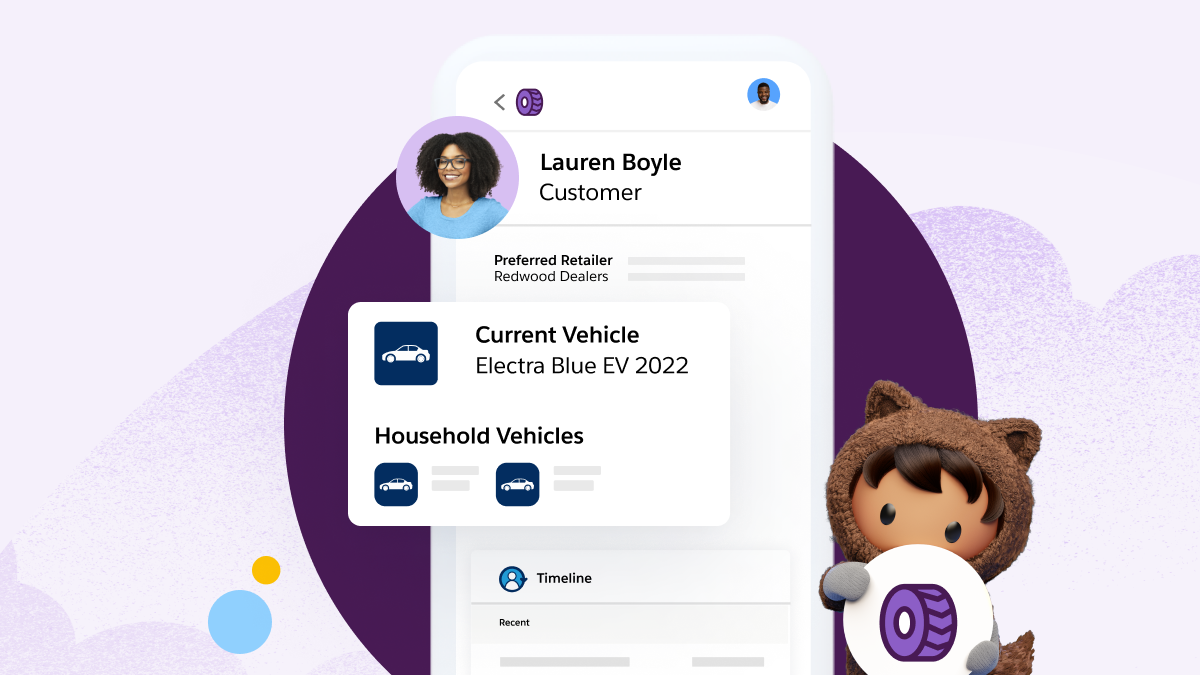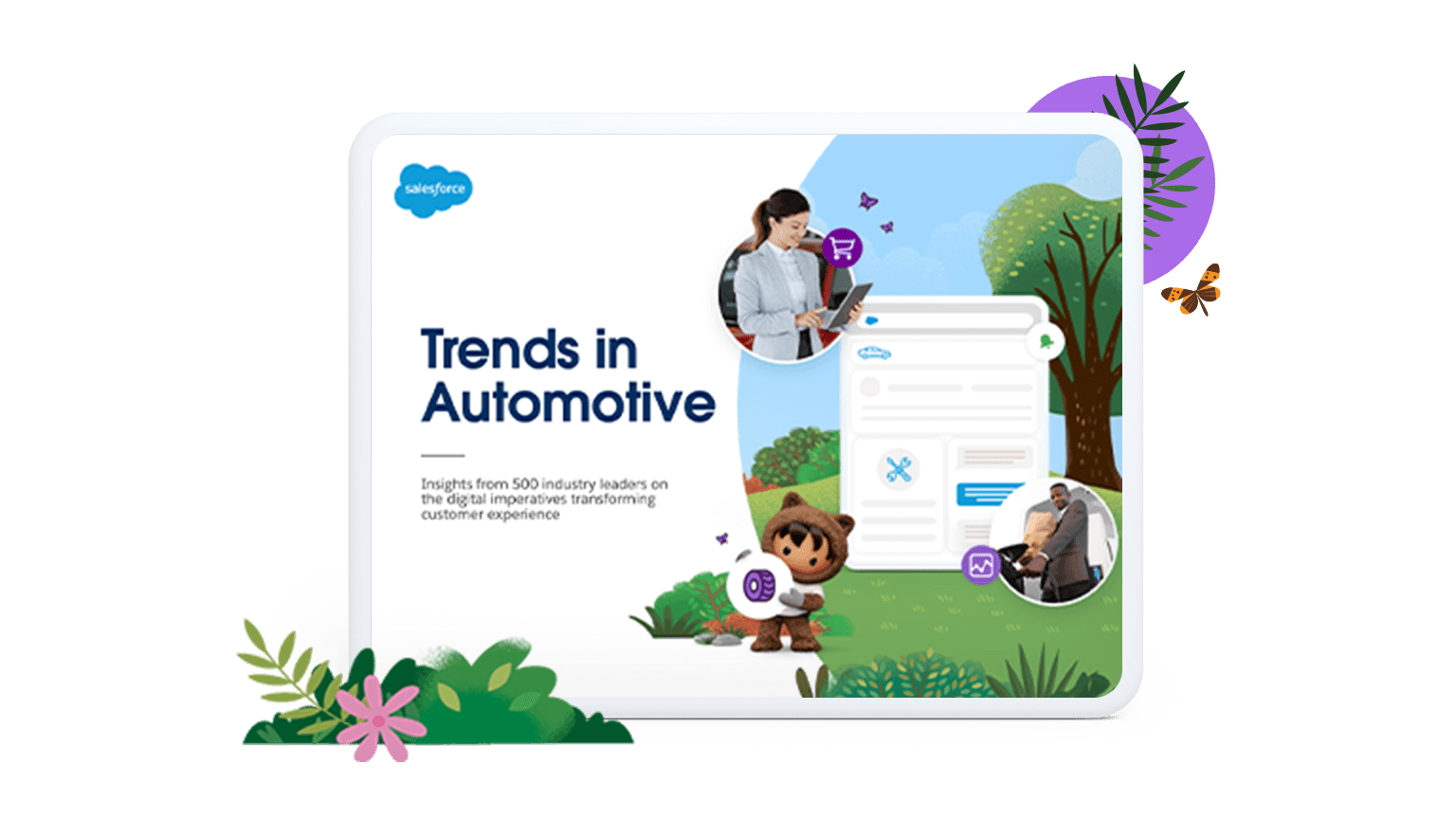How Auto Dealers Can Fast Track Efficient Growth Through Customer Data
Changing customer expectations in the automotive industry are forcing dealerships to take a hard look at the way they do business. Only 1% of buyers are fully satisfied with the vehicle purchase experience. This is a barrier to creating loyalty to the dealership when owners need service or another vehicle, risking long-term profitability. Wowing customers has never been more important. But, with skyrocketing business costs, you’re facing a huge challenge to do more with less … and to do it quickly.
To foster efficient growth, you need to focus on relationship building in addition to meeting sales goals. Creating personalized digital touchpoints is a key factor for improving the customer experience. That’s especially true for the newly dominant cohort of shoppers: millennials and Gen Zers. The up-and-coming generations want coherent experiences — from their screens to your showroom, where they are likely to show up to kick the tires. Want to turn them into life-long customers? Know them! That means creating a unified view of customer data and activity — from their digital shopping habits to service requests and every communication on any platform.
Fortunately, there are now tools that can help you meet the new set of customer demands in the auto industry. And even better, these new tools can help reduce your costs and increase your team’s productivity. But first, dealerships need to shift their mindsets.
Dealership digital storefronts are falling short

Look beyond 30-day sales goals and focus on deepening customer relationships.
How can dealers transition from a transactional focus to building better customer relationships?
Two-thirds of dealers and OEMs say they are doing at least an above average job of providing services to their customers. But customers appear to have a different point of view.
Service is a leading source of customer dissatisfaction, with vehicle owners saying they fear they will be overcharged or the dealership location is inconvenient. No wonder just 34% of vehicle owners turned to dealers for service and repairs. “OEMs tell me there is a huge runoff once warranties expire. That’s a lot of business driving out the door,” said Poponi.
You can try to minimize service defections when warranties lapse by posting prices for your services. “Dealers could be more transparent by showing any discounts to the OEM recommended price — as well as labor rates,” said Poponi. “They could also post their price for any regular service they do, say, an oil change — a service customers can easily compare to independent shops. If the dealership is competitive, more owners might stick with their servicing dealers.”

Connecting all your customers’ data — from sales, finance, and service — allows you to know more about your customer, including the types of vehicles they purchase, the price range they’ve agreed to in the past, how regularly they come in for maintenance or service, and more.
Service employees traditionally work on different systems than sales and finance. But having visibility into data from each area within your dealership can help better serve customers while benefiting everyone in your store. For example, if your service center can see how much equity a customer has in their car, they can discuss whether it’s wiser to make a repair or trade in the vehicle. They could potentially offer the customer a brand new car with the same payment.
“Thanks to Amazon, customers expect retailers to know them and all their interactions so it’s easier to do business together. Anytime there is a stumble in handing off the customer from one part of an organization to another, it’s an opportunity for the customer to find someone that’s easier to do business with,” said Poponi.
Yet only 46% of companies report having comprehensive data on customers. Dealers who can unify data will have a huge edge going forward.
Buying a car is anything but simple or transparent. And that’s a problem for building trust.
Only 24% of automotive companies said their website prices matched what customers actually pay. That’s largely because dealers historically don’t want competitors to see their pricing. But customers don’t care about your business reasons. They need to know if the price fits their budget and if it’s competitive. That kind of murkiness can lead to mistrust: 74% of consumers say communicating honestly and transparently is more important now than before the pandemic. And, technology can enable customers to see the true price without revealing prices to competitors. According to Patrick Smith, Sr., Director of Product Strategy and Marketing at Concentrix Catalyst, “price transparency not only meets the customer expectation about price, it also simplifies and improves the overall customer experience in a hybrid transaction by removing uncertainties and friction in the transaction.”
Poor online access to account information is another big turn-off. Seventy-nine percent of OEMs and dealers report customers have trouble accessing their personal accounts or service cases through digital channels. When customers can’t see their information — how much they’re being charged or how much they owe on a vehicle — that raises concerns. Are the charges correct? How do you check? Customers should be able to easily access their information; it’s fundamental to trust.
With all your data combined, you can automate many of the tasks that bog down your employees’ (and customers’) time. This allows them to focus on more meaningful and valuable work. According to the 2022 Salesforce Success Metrics Global Highlights study, employee productivity increases 26% for companies using automation.
Adding artificial intelligence (AI), sales and service employees can quickly surface insights based on customer data, interactions with the dealership, and behaviors that improve upselling opportunities. These AI-powered insights provide personalized recommendations to help customers make faster buying decisions and possibly help you add features they would find useful.
Here are just a handful of ways your employees can be more efficient with personalized data:
- Prepare for appointments with notes from past purchases and pages or models the customer visited on your website
- Automate alerts to let customers know that models they’re interested in are available
- Let shoppers and owners know when new vehicle accessories, features, and incentives are available
AI enables you to create targeted marketing campaigns quickly and efficiently. You could try to re-establish relationships with owners no longer using the service center by alerting them to valuable information about their vehicle. For vehicle owners who are still using your service center, you can send automated communications before they arrive for planned service calls to notify them of potential offers. This advanced notice avoids making customers feeling pressured to make decisions on the spot. You can even suggest setting up appointments with the sales department to view new models. “Doing this in advance sets the customer’s expectations. It’s more transparent and it helps build trust versus a surprise big sales push in the service lane,” said Poponi.
When AI can spot those kinds of opportunities and you can automate highly personalized messages, you’ll gain substantial competitive advantages. That’s especially true now since 78% of OEMs and retailers say they cannot customize communications based on specific profiles or even based on customer complaints.
Get more insights into what the automotive industry is doing to compete successfully.
Many vehicles now have features that function with computer-like controls, such as automatic deceleration or stopping if the driver gets too close to the car ahead. Some cars include smartphone apps that enable drivers to track when they need to charge their vehicle or alert them to other service issues. All these features make operating a vehicle more complicated. “Many drivers don’t understand how many of their modern features, like radar-based cruise control and lane-keeping, work,” said Poponi.
Become trusted resources by offering ongoing educational content that helps owners take full advantage of all their vehicle offers. It can also nip potential problems in the bud by helping owners understand how their vehicle operates, eliminating unneeded service calls or visits. And, there’s a treasure trove of information dealers can provide to those starting to research electric vehicles.

To build loyalty, dealers need a 360-degree view of customers.
Growing lasting relationships is critical to the future profitability of car dealerships. But, with Americans hanging onto their cars a record 12 years on average, loyalty needs to extend beyond the individual car sale to all the services your dealership provides.
Building an ongoing relationship starts from the moment a customer begins their vehicle search, whether online or in person. Each interaction throughout the life of the vehicle is an opportunity to extend it. Solving for transparency, knowing your customer, and putting the customer at the center of your business can help you earn that loyalty.
Salesforce Automotive Cloud gathers data from all the systems you use for a 360-degree view. Customer 360 gives your employees the data they need to wow your customers. It helps your sales team close faster and your service teams provide more personalized maintenance and repair consultations, all of which provides a new vehicle-buying experience your customers will appreciate. The ultimate long-term goal? To command loyalty so customers think of you first when it’s time to service, replace, or get information on their vehicle.
A Bumpy Ride for Customers.
More Resources

Salesforce for Automotive Demo

Don’t wait years for results – see how Ford is reinventing itself fast














